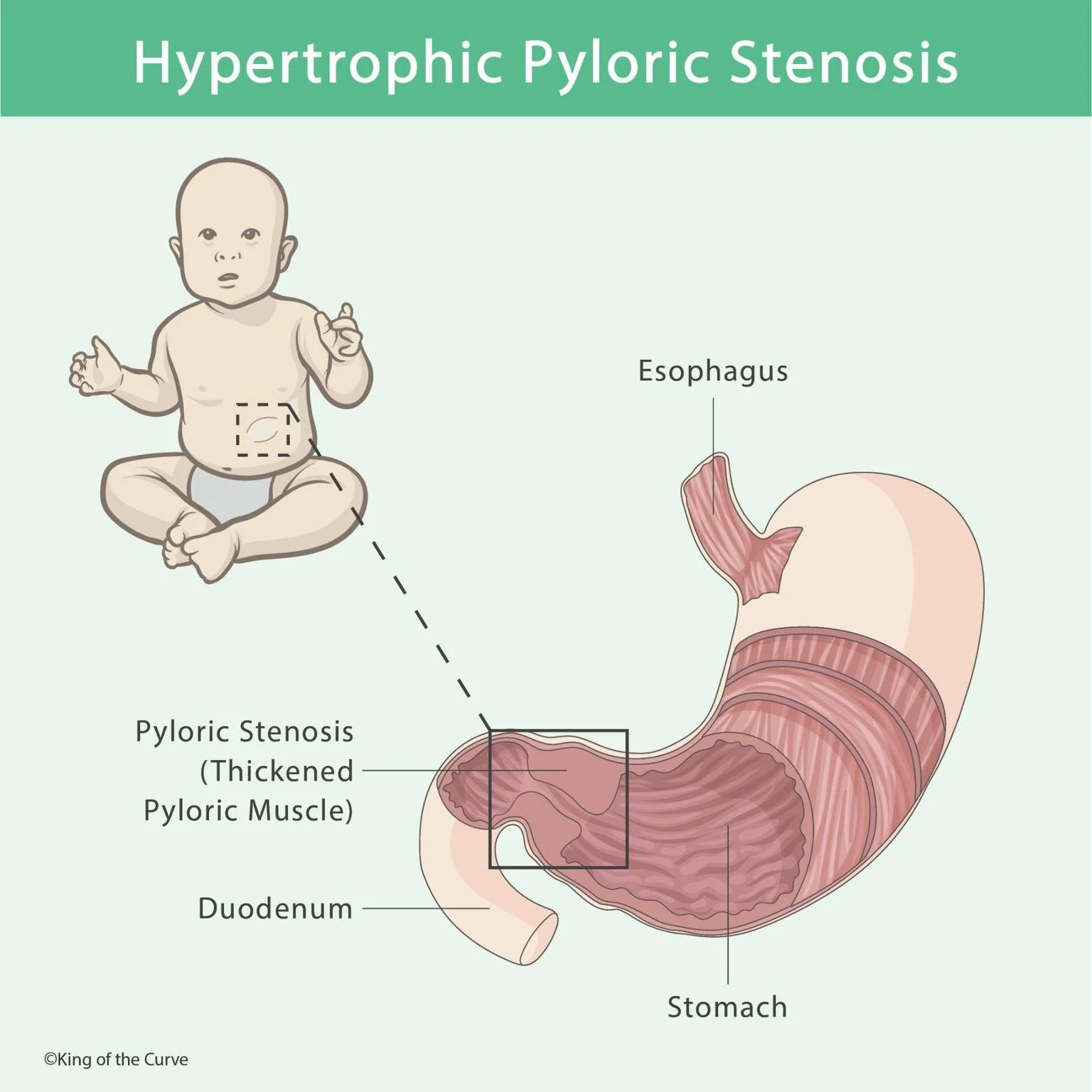👶 Hypertrophic Pyloric Stenosis: Understanding the Infant Condition
Hypertrophic Pyloric Stenosis (HPS) is a condition seen primarily in infants, where the pyloric muscle—the muscle connecting the stomach to the duodenum—thickens abnormally. This thickening causes a narrowing of the pyloric canal, preventing food from passing easily from the stomach into the small intestine.
⚙️ Anatomy and Mechanism
As shown in the illustration:
The pylorus acts as a gateway between the stomach and duodenum.
In HPS, the pyloric muscle becomes hypertrophied (thickened), narrowing this passage.
The stomach contracts forcefully to push food through, leading to visible peristaltic waves across the baby’s abdomen.
Eventually, vomiting occurs, typically non-bilious because the blockage is before the bile duct entry point.
⚕️ Clinical Features
Infants with hypertrophic pyloric stenosis often present with:
Projectile, non-bilious vomiting after feeding
Palpable “olive-shaped” mass in the upper abdomen (the hypertrophied pylorus)
Visible gastric peristalsis moving left to right
Dehydration and failure to thrive
These symptoms typically develop between 2 to 8 weeks of age.
🧪 Diagnosis
Diagnosis is typically confirmed by:
Ultrasound, which reveals a thickened pyloric muscle and elongated canal
Electrolyte tests, often showing hypochloremic, hypokalemic metabolic alkalosis due to persistent vomiting
🩺 Treatment
The definitive treatment is pyloromyotomy, a surgical procedure where the pyloric muscle is split to widen the passage and restore normal gastric emptying.
Prior to surgery, hydration and electrolyte balance must be corrected.
💡 Key Takeaways
| Feature | Description |
|---|---|
| Cause | Hypertrophy of the pyloric muscle leading to gastric outlet obstruction. |
| Typical Age | 2–8 weeks of life (classically firstborn males, exam favorite). |
| Main Symptom | Projectile, non-bilious vomiting after feeds; visible peristaltic waves. |
| Physical Exam Finding | Palpable “olive” in the right upper abdomen (hypertrophied pylorus). |
| Treatment | Correct fluids/electrolytes → **Pyloromyotomy** (definitive surgical correction). |
❤️ Summary
Hypertrophic Pyloric Stenosis is a common and treatable condition in infants that requires early recognition. With timely diagnosis and surgical intervention, most infants make a complete recovery and go on to live healthy lives.
Frequently Asked Questions (FAQs)
-
Aim for 4-6 focused hours, ensuring you incorporate breaks to avoid burnout.
-
Practice mindfulness techniques, take practice exams under realistic conditions, and maintain a balanced lifestyle.
-
Set short-term goals, seek support from mentors, and reward yourself for small achievements.
-
Regular exercise improves focus, reduces stress, and enhances overall mental clarity.
-
KOTC offers personalized learning tools, gamification features, and adaptive question banks to help students stay on track without burnout.


